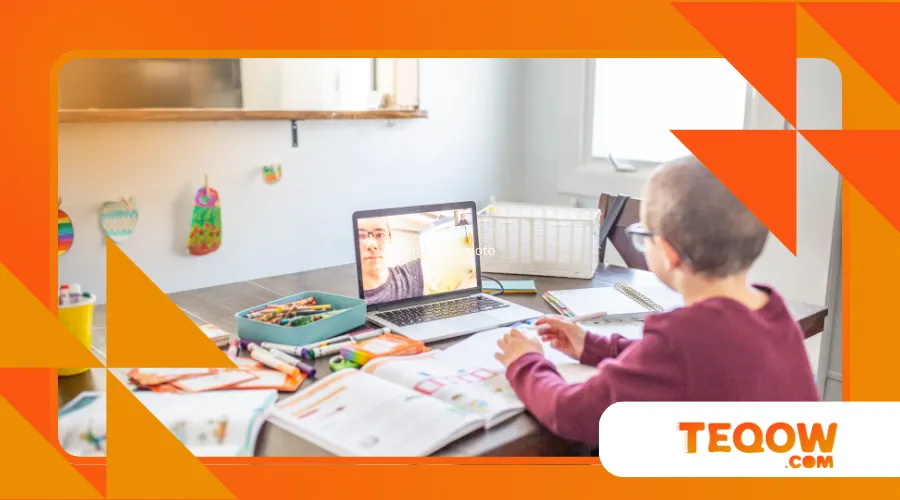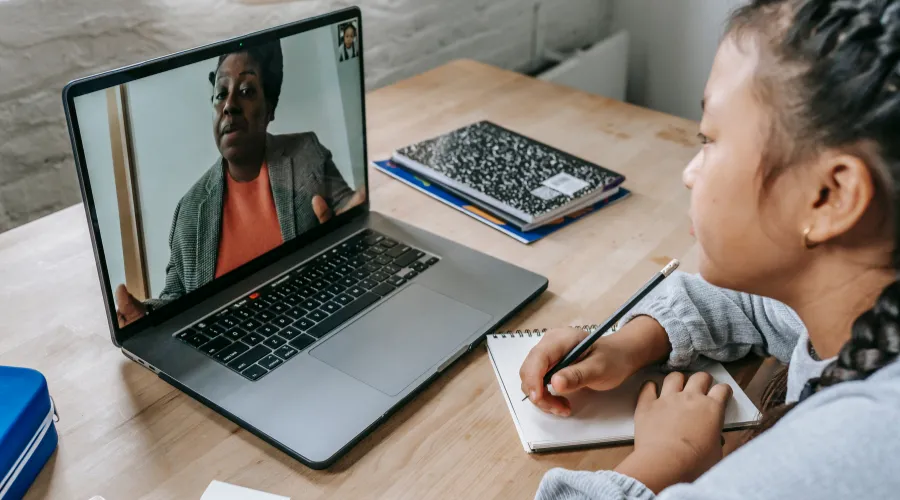The Impact of Remote Learning on Student Performance and Mental Health in 2025

The impact of remote learning on student performance has reshaped education in profound ways, as digital classrooms continue to evolve in 2025.
What began as a necessity during the global pandemic has transformed into a staple of modern education, blending flexibility with challenges.
This article explores how virtual learning influences academic outcomes and mental well-being, weaving together fresh perspectives, data-driven insights, and creative analogies to unpack a complex issue.
With technology advancing and societal expectations shifting, one question lingers: Are we truly equipping students to thrive in this digital era, or are we leaving them adrift in a sea of screens?
The Evolution of Remote Learning in 2025
Remote learning in 2025 is no longer the clunky, makeshift solution of 2020.
High-speed internet, AI-driven tutoring platforms, and immersive virtual reality classrooms have elevated the experience.
Schools across Canada, from urban Toronto to rural Saskatchewan, integrate hybrid models, balancing in-person and online instruction.
Yet, the impact of remote learning on student performance isn’t a one-size-fits-all narrative.
While some students excel in self-paced environments, others struggle without the structure of traditional classrooms.
Consider Mia, a 15-year-old from Vancouver.
She thrives in her virtual science class, using interactive simulations to explore ecosystems.
Her grades have soared, and she appreciates the autonomy to learn at her own pace.
Contrast this with Liam, a 17-year-old in Halifax, who feels isolated in his online math course.
Without real-time peer collaboration, his engagement wanes, and his test scores reflect it.
These contrasting experiences highlight a key truth: remote learning amplifies individual differences, rewarding self-discipline but punishing those needing external motivation.
A 2024 study by the University of Toronto found that 68% of Canadian high school students reported improved grades in subjects with interactive online tools, yet 45% cited feelings of disconnection.
This duality underscores the need to examine both academic and emotional outcomes when assessing the impact of remote learning on student performance.
Moreover, teachers are adapting their methods to better accommodate diverse learning styles, employing a mix of synchronous and asynchronous activities.
This flexibility allows for personalized learning paths, enabling students to engage with material in ways that suit them best.
However, the reliance on technology also raises questions about digital literacy and the skills needed to navigate this new educational landscape effectively.
Academic Performance: A Double-Edged Sword
Virtual education offers unparalleled flexibility, but its effect on academic outcomes is nuanced.
Adaptive learning platforms, like those powered by AI, tailor lessons to individual needs, boosting comprehension for many.
For instance, platforms like SmartLearn adjust math problem difficulty in real-time, ensuring students like Mia remain challenged without feeling overwhelmed.
Data from the Canadian Education Association shows that students using such tools scored 12% higher on standardized tests compared to peers in traditional settings.
Yet, the absence of physical classrooms can erode accountability.
Students like Liam, who rely on in-person cues from teachers, often procrastinate in virtual settings.
The lack of immediate feedback loops—unlike a teacher circling the room—can lead to knowledge gaps.
This is especially true for subjects requiring hands-on practice, like chemistry or physical education.
The impact of remote learning on student performance thus hinges on course design and student temperament.
| Factor | Positive Impact | Negative Impact |
|---|---|---|
| Flexibility | Self-paced learning suits motivated students | Lack of structure hinders procrastinators |
| Technology | AI tools enhance personalized learning | Tech issues disrupt access for low-income students |
| Engagement | Interactive platforms boost interest | Isolation reduces participation |
This table illustrates the delicate balance educators must strike to maximize academic gains while minimizing pitfalls.
Furthermore, ongoing professional development for teachers is crucial in ensuring they are equipped to effectively utilize these technologies.
Workshops focusing on best practices for online instruction can enhance educators’ ability to engage students and foster a supportive learning environment.
As schools continue to invest in technology, the challenge remains to ensure that all students can benefit equally from these advancements.
+ New Provincial Initiatives to Support Indigenous Education and Reconciliation
Mental Health: The Hidden Cost of Screens
Beyond grades, the psychological toll of remote learning demands attention.
Imagine a tightrope walker, balancing focus and well-being while gusts of distraction blow from all sides—this is the student navigating virtual education.
The impact of remote learning on student performance is inseparable from its effect on mental health, as stress, anxiety, and isolation reshape the learning experience.
In 2025, Canadian students report mixed feelings about online classes.
The flexibility to study from home reduces commuting stress, but prolonged screen time and limited social interaction take a toll.
A survey by the Canadian Mental Health Association revealed that 53% of students aged 13–18 experienced heightened anxiety due to virtual learning environments.
The constant pressure to stay “on” in video calls, coupled with blurred boundaries between school and home, leaves many feeling drained.
Take Sarah, a Grade 10 student in Ottawa.
She loves the quiet of her home study space but misses hallway chats with friends.
Over time, her enthusiasm for learning wanes, replaced by a creeping sense of loneliness.
Her story isn’t unique.
Without casual peer interactions, students lose opportunities to build resilience and emotional intelligence—skills as critical as algebra or essay writing.
Moreover, the lack of face-to-face interaction can hinder the development of social skills, making it challenging for students to form meaningful connections.
As the digital landscape evolves, it’s crucial to prioritize mental health resources alongside academic support to create a holistic educational experience.

Strategies to Mitigate Mental Health Challenges
Educators and policymakers are responding with innovative solutions.
Schools in British Columbia have introduced “virtual recess” programs, where students join moderated online games or mindfulness sessions to foster connection.
Ontario’s hybrid models prioritize in-person days for collaborative projects, ensuring students like Liam maintain social bonds.
These initiatives show promise, but they’re not universal, leaving rural and underfunded schools at a disadvantage.
Another strategy involves training teachers to spot signs of distress in virtual settings.
Subtle cues—like a student turning off their camera consistently—can signal emotional struggles.
By integrating mental health check-ins into online curricula, schools can address issues before they escalate.
The impact of remote learning on student performance could improve significantly if mental health becomes a priority, not an afterthought.
| Strategy | Implementation | Expected Outcome |
|---|---|---|
| Virtual Social Spaces | Online clubs, games, and mindfulness sessions | Increased sense of belonging |
| Teacher Training | Workshops on identifying mental health red flags | Early intervention for struggling students |
| Hybrid Models | Mix of in-person and online classes | Balanced social and academic engagement |
This table outlines actionable steps to support students’ emotional well-being in virtual environments.
Additionally, collaboration with mental health professionals can enhance the effectiveness of these strategies, ensuring that interventions are evidence-based and tailored to students’ needs.
Schools can also leverage community resources, partnering with local organizations to provide workshops and support groups focused on mental health awareness.
As the understanding of mental health continues to evolve, integrating these insights into educational practices will be essential for fostering student well-being.

++ The Role of Digital Literacy in Shaping Tomorrow’s Workforce
Equity and Access: The Digital Divide Persists
No discussion of remote learning is complete without addressing equity.
In 2025, Canada has made strides in expanding internet access, but disparities remain.
Low-income families and rural communities often lack the high-speed connections or devices needed for seamless online learning.
This digital divide directly influences the impact of remote learning on student performance, as students without reliable tech fall behind.
For example, a student in a remote Manitoba community might share a single laptop with siblings, disrupting their ability to attend live classes.
Meanwhile, their urban counterpart with a personal tablet and fiber-optic internet faces no such barriers.
These gaps exacerbate existing inequalities, making it harder for marginalized students to compete academically.
Policymakers must prioritize infrastructure investments and device loan programs to level the playing field.
Without these, the promise of remote learning—accessible education for all—remains out of reach for many.
Moreover, community initiatives aimed at providing tech resources can play a significant role in bridging this gap.
Organizations like Computers for Schools Canada are working to refurbish and distribute computers to underserved communities, helping students gain the tools they need for success.
By addressing these disparities, Canada can move closer to realizing the full potential of remote learning for all students.
The Role of Parents and Community
Parents play a pivotal role in shaping the remote learning experience.
In 2025, many Canadian parents act as unofficial co-teachers, guiding younger students through technical glitches or homework.
However, this role can strain working families, particularly single-parent households.
Community organizations, like libraries and youth centers, have stepped in, offering free tutoring and tech support to ease the burden.
These partnerships highlight a broader truth: the impact of remote learning on student performance extends beyond the classroom.
It’s a collective effort, requiring schools, families, and communities to align.
By fostering collaboration, Canada can create a more resilient education system that supports both academic and emotional growth.
Additionally, parent engagement in school activities can enhance students’ motivation and commitment to their education.
Workshops for parents on navigating remote learning tools and strategies can empower them to better support their children.
As communities come together to address the challenges of remote education, the potential for positive change becomes more pronounced.
To learn more about the topic, visit the National Library of Medicine website.
Looking Ahead: Reimagining Education
As we navigate 2025, the impact of remote learning on student performance and mental health remains a dynamic challenge.
The data is clear—virtual education can elevate outcomes for some while leaving others struggling.
The solution lies in balance: leveraging technology’s strengths, addressing its shortcomings, and prioritizing human connection.
Educators must continue to innovate, blending the best of online and in-person learning.
Policymakers must tackle inequities to ensure no student is left behind.
And communities must rally to support students’ emotional and academic needs.
Only then can we harness the full potential of remote learning without sacrificing well-being.
So, what’s the path forward?
It starts with asking tough questions: How can we make virtual classrooms as vibrant as physical ones?
By embracing creativity, empathy, and evidence-based strategies, Canada can lead the way in redefining education for a digital age.
As we look to the future, ongoing research and collaboration will be key to developing effective practices that benefit all students.
The journey ahead requires a commitment to continuous improvement, ensuring that education evolves to meet the needs of a changing world.
